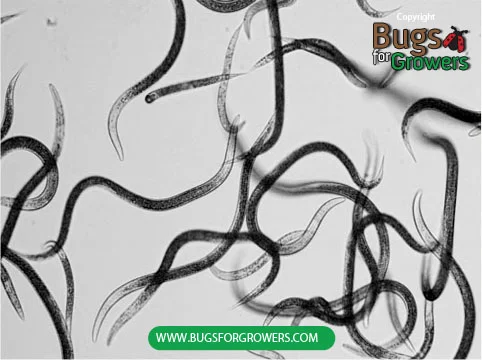Migration of the Fall Armyworms
The fall armyworm, Spodoptera frugiperda is one of the most economically important pests of different plant species including corn, sorghum, forage, and turf grasses. Although fall armyworm larvae actively damage crops throughout the United States during growing season, they generally die when harsh winter begins in northern, central and eastern United States. Then question arises how they could re-infest fields and cause damage to the crops grown in these areas during spring and summer again. The answer is very simple as they will die due to cold wintery weather conditions in the northern parts of the country but at the same time they will also survive in southern parts of the country such as Florida and Texas where temperature is comparatively warmer during fall and winter seasons. In this region, armyworms continuously feed and multiply on different crops (corn and sorghum) and grass species (bermudagrass, bluegrass, Johnsongrass, Sudangrass and ryegrass) grown during fall and winter seasons. Since armyworms take only 28-30 days to complete their egg to egg life cycle under warm conditions, they can complete several generations and increase their population exponentially from fall until the beginning spring. If these multiplying populations of armyworms are not controlled on time, a large number of adult moths will emerge from pupae and begin migrating towards the northeast as soon as temperature begins warming up in spring and summer. During migration, armyworms will complete several generations on their hosts and each generation will produce a new batch of adult moths. These moths will keep flying, mating and multiplying several times until they reach to their final destination in northeastern states where they will infest the fields and start feeding and multiplying on newly planted crops. This is how a large number of armyworms will re-infest the fields and damage the different crops in late summer through early fall in the northeastern states. Only larval stages of the fall armyworms cause damage to a wide variety of plants. Generally, newly hatched larvae will feed and skeletonize leaves whereas matured larvae can consume entire leaf.
Mature larva of the Fall Armyworm
Biological Control of The Fall Armyworms
The beneficial entomopathogenic nematodes like Heterorhabditis bacteriophora, Heterorhabditis indica and Steinernema carpocapsae can be used as biological control agents to target and kill both the larval and pupal stages of the fall armyworms. For the effective control of armyworms, it is recommended to apply 23000 or one billion beneficial nematodes per sq. ft. or per acre, respectively early in the morning or late in the night. Since armyworm larvae are very active during mornings and nights, they can be easily found by the nematodes. Another advantage of applying nematodes during mornings and evenings is that they can be protected from UV light as it can kill them instantly even with a brief exposure. Since beneficial entompathogenic nematodes will infect and kill both larval and pupal stages of the fall armyworms, there will be no formation of either pupae or the emergence of adult moths and therefore there will be no migration of armyworms from south to north or no more damage to crops or grass species grown in sod farms in Florida, Georgia and Texas.
Beneficial Entomopathogenic Nematodes
How do Beneficial Nematodes kill armyworms?
Beneficial nematodes generally enter into the body cavity of the larvae and/or pupae via breathing pores (spiracles). The nematodes will then release their symbiotic bacteria via anus in the blood where bacteria will multiply, cause septicemia and kill larvae and pupae within 48 hours of infection.
Please read my blog post: “Biological control of turfgrass armyworms with beneficial nematodes”.

